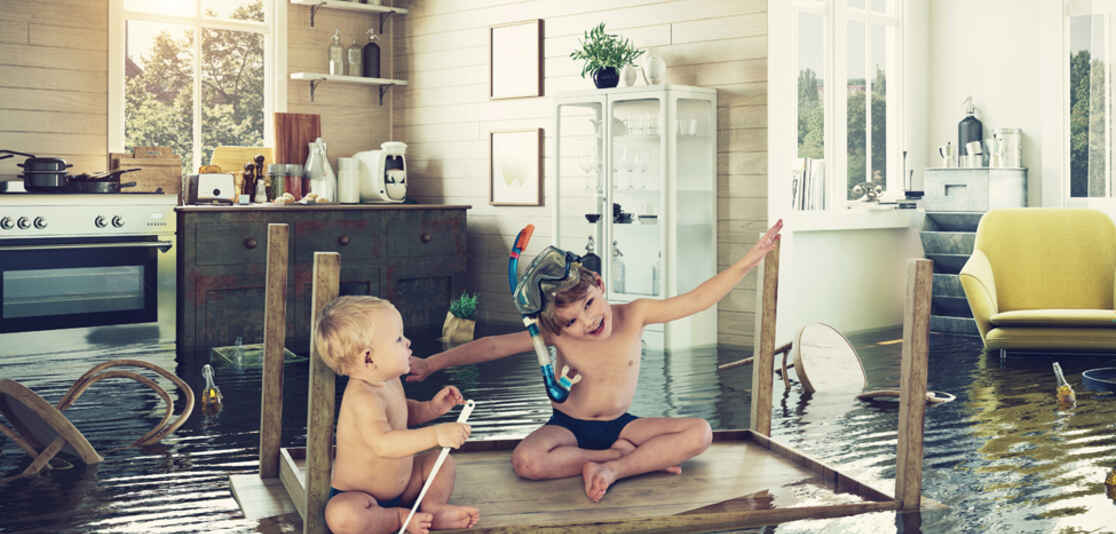If you assume nothing bad will ever happen to your rental property, then you’re navigating a slippery slope. Unfortunately, unforeseen events do occur with rental properties, even when you have 5-star tenants in place, and that’s where landlord insurance steps in.
What’s more, there’s always a risk your tenants fail to make rent payments. According to landlord insurance brokers, around 30% of their insurance claims are rent-loss related. So really, the only way to have total peace of mind is to be adequately insured. But with different types of insurances available, how do you know what you need?
Let’s breakdown the different types of insurance your property may need:
1. Building & Contents Insurance
Standard building and contents insurance is mostly designed for owners who occupy their property. It’s the most common policy that protects a free-standing home and your personal possessions.
Whilst standard home and contents insurance may cover the building when occupied by a tenant, it doesn’t cover any actions by the tenant resulting in financial loss for the landlord. Therefore, as the landlord you’re not protected for all possible risks.
2. Strata Insurance
Strata insurance is usually set in place by the body corporate for strata-titled buildings such as apartments and units. Whilst the owner’s building insurance covers the interior of an apartment, strata insurance covers the common areas such as gardens, lifts, walls, windows, pools, ceiling and floors. (NB: Always check exactly what is covered under your strata policy).
Strata insurance also includes liability cover for any injuries to people on the common property. So, if a tenant or visitor injures themselves in a common area (such as stairs or a shared walkway), then any subsequent legal liability claim would be handled by the strata insurer.
However, if a tenant or visitor injures themselves while they are inside the rented apartment, it is the landlord who can be found liable. That’s why a landlord needs a separate landlord insurance policy to be covered for legal liability.
3. Landlord Insurance
Landlord Insurance is an insurance policy specifically designed to help protect landlords from common risks and financial loss associated with renting their investment property.
It provides cover for a property against loss or damage caused by tenants, whether malicious, accidental or deliberate.
The Most Common Landlord Insurance Claims include:
- Malicious and accidental damage - including holes punched in walls, doors kicked in, or damage and vandalism to carpets and floors
- Water damage - separate from flood or storm water damage, this relates to water damage from appliances and fittings, such as leaks, burst pipes, and sinks, etc.
- Death of a tenant - surprisingly, this is the fourth most common landlord insurance claim. Whilst compassion and care are required in circumstances like these, a landlord still needs to secure their investment and continue to generate income.
- Storm damage - not usually covered by standard building and contents insurance or strata insurance policies, so this is where landlord insurance has to fill the gap.
4. What’s the difference between landlord and building insurance?
Landlord Insurance provides protection for tenant-related risks that are typically not covered by standard Building Insurance.
The main difference between Landlord Insurance and Building Insurance is usually the amount of rental income protection and whether or not loss of rent is included in the policy, or is offered as an optional extra.
For example, most Landlord Insurance Policies will cover you for:
- Loss of rental income - if a tenant absconds, defaults on their rent due to hardship (or released per court order)
- Unable to access property - you’re prevented from accessing the property due to damage caused by an insured event
- The property is un-tenantable - usually valid after 7 days vacancy has occurred and whilst tenant-related damage to contents by an insured event is being repaired.
- Building cover - damage to fixtures and fittings, such as hot water systems, built-in air-conditioners and heaters, built-in cabinetry, doors, walls and windows, fencing, paths, driveways and in-ground swimming pools, rainwater tanks and solar panels, floor tiles etc
- Landlord contents cover - can include items such as light fittings, blinds and curtains, carpets, and electrical appliances
5. Which landlord insurance policy should you choose?
Always do proper research when comparing landlord insurance policies. Different insurers and policies will vary in what they offer and what conditions apply when making a claim. That’s why you should always read the product disclosure statement carefully so you know exactly what your insurance covers you for.
Disclaimer
The information contained in this article is intended to educational only. Richardson & Wrench does not accept any legal responsibility for any loss incurred as a result of reliance upon it. Always seek check with your Insurers and read their Product Disclosure Statement before buying property insurance and consider whether it is right for you.
